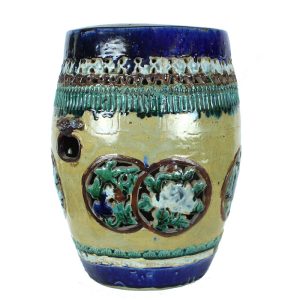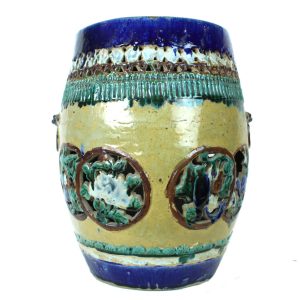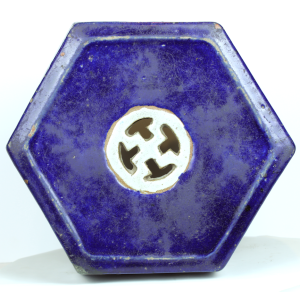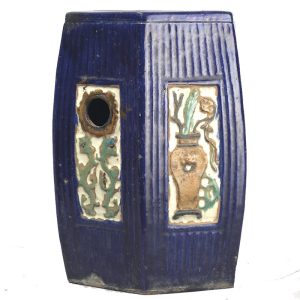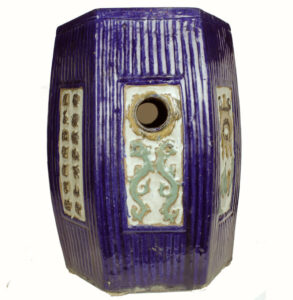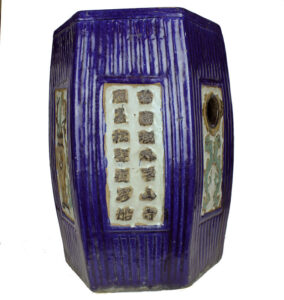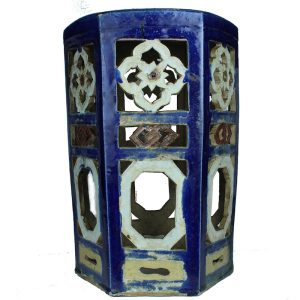The Ubiquitous and Charming Chinese Ceramic Stools
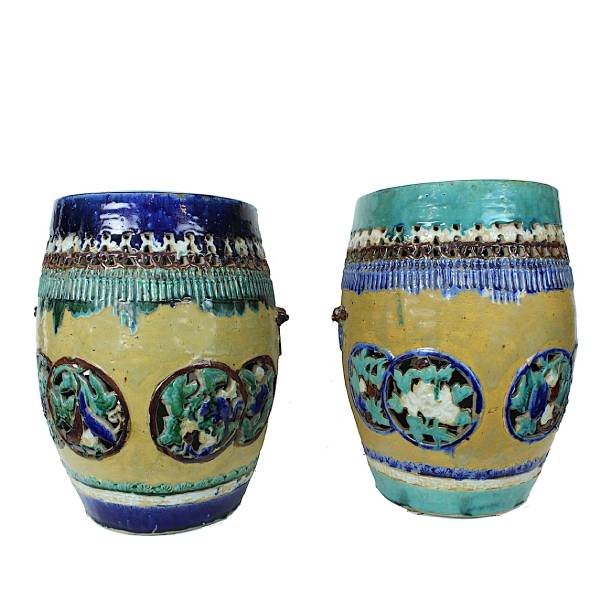
The Chinese stool is a modest seat that has been used since ancient times. A stool was first found on a bronze Eastern Zhou vessel (776-256 BCE) and folding ones reached China via nomads by the late 2nd century. Early Buddhist art of the 4th-5th century often showed monks and bodhisattvas on a stool meditating, they were depicted in 6th century tombs to offer prestige and comfort in the hereafter, and Tang Dynasty (618-906) noble women were often shown sitting on them. By the Song Dynasty (960-1279), they were molded into round seats and used in homes and gardens. Houses often had a garden surrounded by a courtyard, its layout had a symbiotic relationship with its surrounding landscapes, and stools became prevalent practical seating for indoor and outdoor use. Light portable wood stools were made in a large variety of shapes and used indoors, and durable stone and ceramic stools were used inside but more often outside, as they could tolerate the elements.
Stools stem from the Buddhist garden tradition that used tree stumps and smooth rocks for outdoor seating. Scholar-officials and literati found refuge from an increasingly complex world in nature and outdoor gardens they used for walking, meditation, solace and contemplation in an unspoiled environment and to spend informal time like-minded people. Stools soon began to seen not only as utilitarian items but also as works of artistic beauty enhancing one’s serenity, comfort, and quality of life. Other than a small number of stone and marble stools, surviving pieces date from only the late Ming Dynasty (16-17th Century) to the end of the Qing Dynasty (1912).
The Chinese were comfortable sitting erect on stools without back or arm support. Initially stools were not considered low-rank seating, as those using them were literally elevated in importance above others who sat on floor mats. After gifted craftsmen developed artistically shaped and decorative chairs from rich and expensive hardwoods for the wealthy, the stool took on a more humble status. A social seating order was established ruling that one’s position, power, and influence should be expressed by the kind of seat offered and its placement in the seating hierarchy. Stools remained the most prevalent, popular, and practical seating found everywhere: in houses, gardens, shops, and restaurants. Street vendors used small stools to provide the ability to move around, be above the street, and hawk their wares, and others used them for board games, eating quick meals, holding tools, or for myriad other purposes. The popularity of wood stools coincided with their versatility: made small and light, structured using thin members, and constructed with large airy openings and stretchers between their legs to stabilize and reinforce them, they can be stacked for easy access, slung over the shoulder for easy transport, used to reach high places, among other uses.
The rooms inside and outside Chinese homes have a “symmetrical frame of reference” (Lipton) as rooms were usually balanced by a symmetric placement of an equal number of tables, chairs and stools. Furniture was normally purchased in sets of matched pieces or multiple sets. As garden stools were informal and casual, they generally were not created as exact duplicates but were often made with similar and complementary forms and decoration. The pair of barrel shaped ceramic stoneware stools pictured here are constructed in a similar fashion and color scheme and are almost the same size, but one has a dominant cobalt blue glaze and the other has a dominant apple green glaze placed in the same area on each piece.
Stools were decorated with well-known symbols, homonyms, and rebuses to express Chinese hopes, wishes, and desires. Auspicious images and symbols are more than propitious wish-fulfilling declarations; they are cornerstones of Chinese culture, beliefs, and humor. The Chinese believe wearing and having symbolic images or auspicious characters on furniture in one’s home and using auspicious sayings or expressions, pictorial puns, rebuses, or homonyms in speech will result in a fulfillment of wishes.
A coin, often used on ceramic stools, is a well-known symbol and a wish for wealth. The swastika design inside the coin is a Buddhist symbol meaning unlimited or countless and is compounded with the coin to be a wish for much wealth. As the word for vase (ping) sounds very close to the Chinese word for peace (ping’an), the same stool has a vase image in a side panel using it both as a decorative symbol and a wish for peace. This is why vases and vase images were and generally are found in virtually every Chinese home
A dragon represents the emperor, high rank, and power and is a symbol of fertility as it brings rain to fertilize crops. They are paired in a very popular motif chasing a flaming pearl, a symbol of the sun, a wish granting jewel, transcendent wisdom, or enlightenment. A Chinese stool with a “double happiness character is used as a marriage gift, and the appearance of a shou character meaning longevity is a wish for a long life. A full poem in Chinese characters are rare but sometimes may be featured on a ceramic stool.
Most ceramic garden stools were made in a traditional drum or barrel shape. Common ceramic designs included decorative fretwork, low relief decoration, simple pierced schemes, a huge variety of underglaze painted images including calligraphy, and other designs appearing on other ceramic objects. Far less were created as hexagonal objects and fewer still were made with innovative designs including piercings that create designs from variations of positive and negative space, a much more modern concern of the artistic world. Pierced designs and other openings on antique ceramic stools were not only decorative, but they also reduced the likelihood of firing defects caused by excess heat while being fired inside the kiln, which also increased production costs. Cutouts and other openings were designed for airflow through the object to make the seats more comfortable, cooler in summer heat, and enable ceramic pieces to cool naturally and faster. A coin cutout on the top of a piece not only allows for cooling but also permits water drainage pooling on the top. This is why antique stool tops are slightly convex and not flat.
Although contemporary stools and modern reproductions and are common, true antique ones are rare, pricey, usually heavier, more ornate, and pay more attention to fine craftsmanship, iconographic tradition, and fine details. In contemporary décor, they are often used simply as functional decorative elements or as side or end tables without any reference to their history or meaning. In more contemporary design context, ceramic stools also allow for one to easily and inexpensively convert stools into extremely unique and attractive side table or longer table with the addition of a glass top using protective scratchproof pieces which are also required to account for the curvature on a stool’s top.
Sources:
- Terese Tse Bartholomew, Hidden Meanings in Chinese Art, San Francisco, Asian Art Museum, 2006.
- Nancy Berliner, Beyond the Screen: Chinese Furniture of the 16th and 17th Centuries, Boston, Museum of Fine Arts, 1996.
- Nancy Berliner and Sarah Handler, Friends of the House: Furniture from China’s Towns and Villages, Salem, Peabody Essex Museum, 1995.
- Sarah Handler, Austere Luminosity of Chinese Furniture, Berkeley, University of California Press, 2001.
- William Lipton, The Wondrous and Amenable Chinese Stool, New York, Red Leaf Press, 2000.
- Patricia Bjaaland Welch, Chinese Art: A Guide to Motifs and Visual Imagery, Rutland, Tuttle Publishing, 2008.

